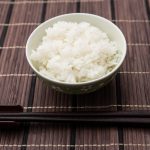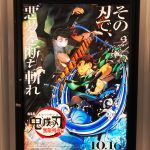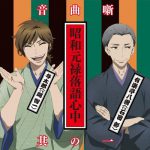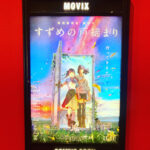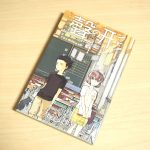Your Name Kimi no Na wa Movie of Makoto Shinkai became a Mega Hit
※What I write about here might includes some spoilers that if you are like “no spoilers”, please watch real movie of “Your Name” instead and I’m glad if you come back here to read this article again
- 1. Your Name overtook the box-office revenue of Princess Mononoke and Howl’s Moving Castle
- 2. Key Words Musubi or bonds and Kuchikami Sake or chewed Sake before fermentation
- 2.1. Musubi
- 2.2. Kumihimo
- 2.3. Kuchikami Sake
- 3. Yukino of “The Garden of Words” appears again
- 4. The Word Taki wrote in Mitsuha’s hand before disappearing
- 5. Understanding the Time Difference
- 6. Where is setting model of Your Name
- 6.1. Set of Itomori, Lake Suwa and Hida Area in Nagano Prefecture
- 6.2. Set of Kuchikami Sake was placed Aogashima
- 6.3. Set of Last Scene Steps near Suga Shrine in Tokyo
- 6.4. Set of Miyamizu Shrine Hie Shrine in Gifu Prefecture
- 6.5. Set of Taki’s School Motomachi High School in Hiroshima Prefecture
- 6.6. Set of Taki’s part-time job Cafe La Bohéme
- 6.7. Set of Pedestrian Bridge Taki makes a call for Mitsuha
- 7. Summary of impression who watched Your Name
- 8. Collaborations of Anime Director, Designer, Actor and Music
- 8.1. Animation Director Masashi Andou
- 8.2. Character designer Masayoshi Tanaka
- 8.3. Actor and Voice Actor Ryunosuke Kamiki
- 8.4. Actress and Voice Actress Mone Kamishiraishi
- 8.4. Music RADWIMPS
- 9. Summary
Your Name overtook the box-office revenue of Princess Mononoke and Howl’s Moving Castle
The popularity of Your Name knows no bounds.
It made more than 19.9 billion yen at the box office as of 4 December, 2016.
It overtook the box-office revenue of 19 billion yen of Princess Mononoke and 19.6 billion yen of Howl’s Moving Castle.
Before I see it, I thought this is a kind of simple fantastic movie of high school students that exchange their bodies for some reason.
Young people and students see themselves in them and feel sympathy while adults remember the good old days in school.
Picture itself is high quality and very beautiful.
I could understand these combination can surely make the big popularity.
That kind of popularity soon ends usually but, to the contrary, its popularity has been growing even after 4 months of its first release.
Rather it became a mega hit.
After I watched this movie, I understood why the movie became so popular.
It was just not only the fantasy of exchanging of body but more drama and connotation in it.
It was just not a simple fantasy.
Key Words Musubi or bonds and Kuchikami Sake or chewed Sake before fermentation
- Musubi
Mitsuha’s grandmother says people call the local Shinto deity “Musubi” in old language.
Connecting string is Musubi, Connecting people is Musubi, Current of time is Musubi, all of them are same word Musubi.
It is the name of deity, power of deity.
Kumihimo that we are making also expresses the power of deity, current of time itself.
After gathering, it makes shape, and twisted, tangled, then turn back to normal again, cut, connected again.
That’s Kumihimo, that’s time, that’s Musubi.I really like this word Musubi or actually I was considering using this word Musuhi as one of my website’s titles at the very beginning.
I add extra information for this Musubi.
What you know Japanese rice ball is called Omusubi in Japanese, too.
This is also same connotation in it.
Musubu is verb and the meaning of it is connect, bond, join, link, bind.
Otoha’s grandmoter says Musubi connects everything.
It is as if like lives of us themselves.
Gather, but worn, twisted and sometimes cut all of them, but still wish to return and connect.
Still life is adorable.I think Mitsuha’s red hair band or ribbon became Musubi between Taki and Mitsuha.
- Kumihimo
Kumihimo is a traditional technique of gathering or combining strings in Japan.
Actually you can see similar technique if you look around the world.
But it is difficult to success its whole technique to generation to generation.
Its history is very old as it can be seen in the Jomon ware in Jomon period more than 2300 years ago.
The reason it has been succeeded to this long period until today without dying out is it was a necessity thing in Japan.
Armor, Japanese Sword Katana, things in a tea-service, Buddhist altar fittings, Obi for Kimono, etc, it was used for many things in daily life in Japan.There was certainly a time Kumi himo was dying because of the decree that banes wearing swords in Meiji period.
But it was re-evaluated of its value and importance in Meiji period that it is still used here in Japan.Mitsuha’s grandmother was a successor of the Kumihimo.
She said “Kumihimo we make is technique of deity, it reflects the flow of time itself.”
This is similar to Musubi.
The flow of time, Mitsuha herself was making Kumihimo or “the flow of time”.It is the technique of connecting time and people that is nothing less than deity’s work.
- Kuchikami Sake
Kuchikami Sake is Sake made from rice or other cereal that chewed before its fermentation.
When you bite or chew rice, potato, etc related to grain cereals in your mouth, its starchiness is decomposed by an amylase in your saliva and becomes carbohydrate.
When you spit it in the wooden tub and leave it, it ferments by the work of natural yeast and becomes Kuchikami Sake.It is made during Shinto ceremony by virgin shrine maiden and Mitsuha is the one.
As it is made by female that Kuchikami Sake was also called as Bijin Zake (Bijin Sake).
Bijin means beautiful girl or lady in Japanese.Mitsuha, her sister and grandmother goes to the place where Kuchikami Sake should be housed through dense forest up to the top of the mountain.
There, in the center of the big crater, they find the place for Kuchikami Sake.
Mitsuha’s grandmother tells her the place for their Go Shintai (the object of worship in a Shinto shrine) is there and they have to leave their half inside themselves when returning from there.
What she told means Kuchikami Sake.
Mitsuha leaves Kuchikami Sake as the half of herself.And that also becomes a big key factor to connects Taki and Mitsuha beyond time and place.
I write some spoilers in the following sentences that please skip it if you do not want to read.Later when Taki knows the shocking fact and he goes to this place alone that holds Kuchikami Sake.
But as Mitsuha’s grandmother told, once the person visited the place the one has to leave one’s half there.What half Taki had to leave there?
He tried to write Mitsuha’s name in his hand later not to forget her but it disappears in the end.
Not alone her name but even the memory with her.
What he left there might be the memory with Mitusha.Another interpretation is border line.
The world he lives before (before drinking Kuchikami Sake) was the world after everything happened.
The world was the real world which Taki once shared with Mitsuha.
He could not contact Mitusha in the real world anymore.
But he trips back to the history of Itomori in which Mitsuha exists after drinking Kuchikami Sake Mitusha left there.
That means he connected to the world Mitsuha still exists.He might left border line between real world and another world there.
Yukino of “The Garden of Words” appears again
The Garden of Words is also the movie of Makoto Shinkai.
It is really beautiful movie and its Heroin was Yukino.
She was a teacher of national language, especially for Japanese classics.
The word she tells are really beautiful and she tells beautiful word “Ta so Kare” or “Tasogare” in this movie, too.
I know or we use Tasogare in our life.
It means dusk twilight.
She tells about the original meaning of Tasogare in the old days.
It is called “Ta so Kare”, it is the time not day or night, it is the time people’s outlines become blur and you can’t tell “Kare” is “Dare” or “Who” is “he”.
That’s the time you might meet something not human.
“Kare” is “Dare” or “Who” is “he”, this is also a big key word for connecting them.
I think it also has another meaning in this movie.
The Word Taki wrote in Mitsuha’s hand before disappearing
In one scene, Taki says Mitsuha to write down their name in their hands not to forget just before disappearing.
And later, when she was in a desperate situation, what she found in her hand was.
I don’t tell details, actually I didn’t imagine this but thought he did a very good job.
It must have been the best word for her or without the word she might not have been able to make miracle.
Understanding the Time Difference
That’s makes this movie more interesting or makes some people confused.
Before I watch this movie I was wondered why some people say they find this movie is a bit difficult and hard to understand.
It is just a exchange of bodies or kind of love story of students, isn’t it, I thought.
But after I watched the movie I understood the difficult part.
I also had to think back their time lags and the scenes.
Like why they are there when there is this time lag and why he or she did it at that time?
Now I think I understood the time lag and its meaning comprehensively.
This is also one of the key factors of the movie.
Where is setting model of Your Name
Set of Itomori, Lake Suwa and Hida Area in Nagano Prefecture
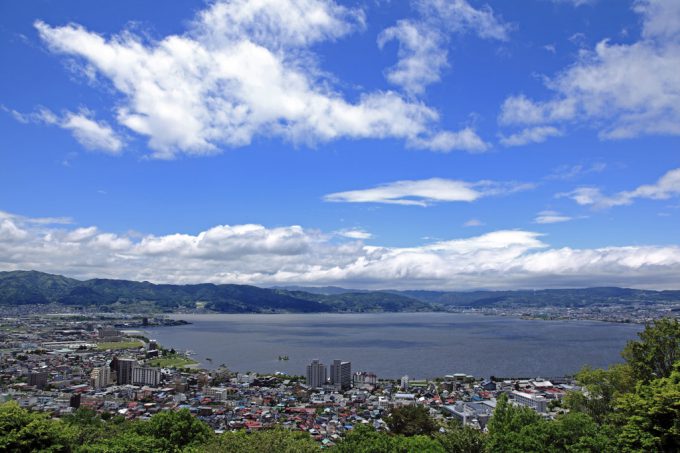
Source : Find Travel
As other viewers say, I also remembered this lake Suwa as the model.
There are big lakes called Suwa lake and Biwa lake in Japan.
And I had been to both of them before and what came up to my mind was this Suwa lake.
I sometimes went travel on my motorcycle in the direction of Nagano for a week or months before.
And what I went around at that time was this big lake Suwa.
It is 759m above sea level and 15.9 km for its circumference.
It says average depth of it is 4.7 m.
And if I tell you the truth the lake was not that clear like the movie’s.
At least, it was not like crystal clear as long as I remember when I visited there 12 years ago.
Seems like it used to have been clear lake more than 30 years ago but generation of water-bloom and water grass contaminated the water quality.
But now the water has been improving because of the works of local government and locals.
In the lake, carp, loach, smelt, small shrimp, etc are living in the lake.
This is certainly a big lake but somehow I didn’t feel like it is that big lake like in this movie’s at the time.
Maybe it’s because I used motorcycle and moved fast without paying so much attention to it.
But around this lake Suwa was not that local as Mitsuha says “No single cafe here”
I could see shops, cafes, hotels, etc around the lake.
Takashima castle there is also a good spot for sightseeing.
For model of Itomori Town, it is around Hida Furukawa Station in Nagano Prefecture.
Especially Hida Furukawa Station at which Taki and friends arrived and taxi stop in which Taki asked taxi driver are exactly same as in the anime.
You can find why the set is identified as Hida from the dialect Mitsuha and Yotsuha sometimes use.
They speak in dialect sometimes in original Japanese one and what they use is dialect peculiar to Hida.
That is called Hida dialect.
Director and Producer of Your Name Makoto Shinkai himself is from Nagano Prefecture.
He also says Hida area is the rough model of Itomori and he wanted to make common atmosphere and scene of countryside that everyone can imagine.
He added he is from Koumi-machi in Nagano and when he looked back he felt like he was drawing pictures under the image of Koumi-machi.
But every staff such as drawing scene of background has their own home town and countryside images they brought up in them that the each images also put into the scenes.
Itomori is a imaginary town which was made in the group collaboration, he says.
I’ve traveled in Nagano Prefecture several times long time ago and it was certainly beautiful place rich in nature!
Set of Kuchikami Sake was placed Aogashima
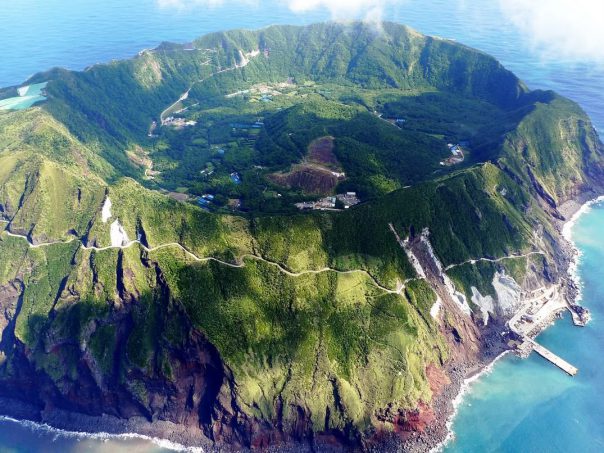
Source : DDN Japan
Mitsuha, her sister and grand mother go to sacred place to place Kuchikami Sake.
They mount through dense forest and they find the place when they came to the top.
Spread out before their eyes was vast scenery.
It is said that the model of this place is Aogashima.
You might surprise but this island is a part of Tokyo.
But it is located 358 kilometers South of Tokyo.
So you need to use ship, airplane, helicopter to get to there from Tokyo.
Set of Last Scene Steps near Suga Shrine in Tokyo
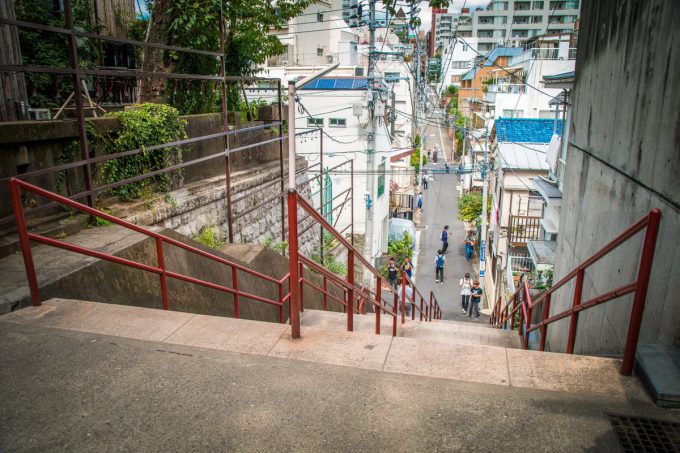
Source : #君の名は https://t.co/6bgUpf51kq
In the last scene, they meet again on the steps in Tokyo.
It is the Suga Shrine.
Suga Shrine is located in Shinjuku ward and Yotsuya is the closest station.
Origin of Suga Shrine dates back to 1634.
It is Shinto Shrine and worshiped in Edo period as Tennou-sama to guard Yotsuya.
Tennou festival that is held every June was famous as a one of the five major Edo festivals.
You might see high skyscrapers such as Roppongi Tower behind the back in the movie but you can’t see them in real.
They stand in the different direction.
Makoto Shinkai sometimes use this method such as changing the picture of background a little.
Set of Miyamizu Shrine Hie Shrine in Gifu Prefecture
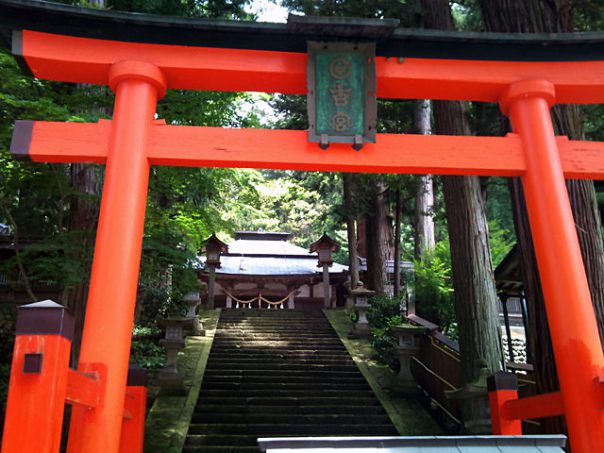
Source : Kashiwade net
This is said to be the model of shrine where Mitsuha did ceremony of Kuchikami Sake.
As you can see this is also one of the Shinto Shrines which located in Takayama city in Gifu Prefecture.
This Hie Shrine is also used in the anime Hyouka.
It certainly has a mystic beauty.
Set of Taki’s School Motomachi High School in Hiroshima Prefecture

Source : Motomachi high school life
I thought the school model is a high school in Tokyo.
But the model of the school is located in Hiroshima Prefecture.
It is Motomachi high school.
My high school was not that modern high school with escalator and not that comfortable open atmosphere.
It looks shinning.
I’d happy to go school if I was a student of such a nice high school.
Set of Taki’s part-time job Cafe La Bohéme
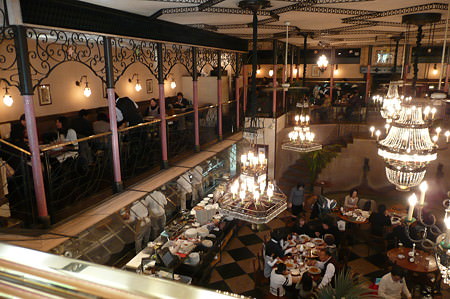
Source : くぼちゃんのご馳走 – 楽天ブログ
Yes this cafe is certainly stylish and I myself was thinking if I should apply for part-time job when I was student.
It is chain cafe and restaurant and you can see some of them in Tokyo.
It is said that the cafe in the movie is the one located in Shinjuku.
I see, setting of “The Garden of Words” was Shinjuku.
Appearance of Yukino in Mitsuha’s class and Taki’s work place in Shinjuku, Makoto Shinkai might wanted to have some connections between “Your Name” and “The Garden of Words”
Set of Pedestrian Bridge Taki makes a call for Mitsuha

Source : Twitter #君の名は pic.twitter.com/iBLhBX0vsq
Taki is calling Mitsuha at one scene for Mitsuha to tell her the result of the date although it didn’t connect.
It was on the pedestrian bridge.
It is just in front of Shinanomachi station in Tokyo.
Summary of impression who watched Your Name
I checked information and impression of others, too for this movie.
I could see many of the watchers say it is a different taste compared to all the past works of Makoto Shinkai.
Makoto Shinkai is the movie director.
Yes, I could understand it.
Only the beautiful trailer itself made me decide to add it must-watch movie.
And I could see no touch of kind of loneliness or melancholy that he had in the most of the movies he made in the past.
I felt positive and brightness touch contained hope and shine for the future in the movie.
It seemed to me it would be not only for close fans of Makoto Shinkai but for everyone who doesn’t know him.
I can say everyone can enjoy this movie.
So it might be completely different if you expect the same touch he had in the past.
Then I thought what I can get from fans of Makoto Shinkai might be disappointing impression as most of the cases this kind of changes resulted in disappointing said that there is no more unique tastes but just for mass.
But what I could find most was very good impression.
It was accepted even from the fans of his since long time ago.
There was a opinion that says you can purely enjoy this anime as an anime rather than this is from Makoto Shinkai’s.
But there are also a few impressions that say it was a little difficult to understand for some parts.
It says that setting of the story of exchange and time axis are little difficult to get in.
It might looks like straightforward-movie for everyone but it has a little-difficult-to-understand-factors such as time axis like the movie “Time waits for no one”.
Either way I didn’t hear negative impressions for this movie and I understood it after watched it.
I have to say that all happened by efforts of following great director, designer, voice actor, music, etc.
Collaborations of Anime Director, Designer, Actor and Music
Animation Director Masashi Andou
Why the movie is so beautiful?
It reminded me of sort of animation in Ghibli.
Maybe most of you also felt like so but there is a reason.
Animation director Masashi Andou is the one who directed animation of “Princess Mononoke”, “Spirited Away”, “When Marnie Was There” of Ghibli.
Not only that he also directed Paprika, Innocence and Evangelion: 3.0.
That’s why the animation and its flow is so beautiful and delicate.
Character designer Masayoshi Tanaka
Characters of the movie were somehow familiar to me.
They were like easy-to-approach character.
But I found that he was the character designer of “We Still Don’t Know the Name of the Flower We Saw That Day”. Aliases, “Anohana”.
Anohana is the movie that I watched in the theater and I was really moved.
I know that its background is Saitama that I grown up even though exact place was different and it reminded me of my childhood.
To think of the movie, there are some kinds of similarities to Anohana’s characters.
That’s why I found familiarity in this movie’s character design.
Actor and Voice Actor Ryunosuke Kamiki
He has been a big fan of Makoto Shinkai’s movies especially 5 Centimeters per Second since long time ago.
He is not just a actor but had a good reputation for his carrier as a voice actor.
Markl in “Howl’s Moving Castle”, Bou (Big baby) in “Spirited away,” Kenji Koiso in “Summer Wars” were famous roles of his.
Actually he is a big fan of anime itself from the first who set out on a pilgrimage of Anime and knows great efforts and high technique of a voice actor while he says his main profession is actor that he try his best effort not to break image of character and read original book or script down to the details to make best.
Actress and Voice Actress Mone Kamishiraishi
She has a good reputation for her multi talents.
As a actress she has gotten many awards.
For a role of voice actor, she made a role of Keno in “Wolf Children Ame and Yuki”.
She also has a good reputation for her voice when she sing a song though she is not a singer.
Makoto Shinkai himself was deeply impressed with her voice at sight at the audition.
Music RADWIMPS
Music of RADWIMPS is one of the biggest reasons of the popularity of this movie.
They are now popular band especially for younger generation in Japan.
Makoto Shinkai was also the fan of them that’s why their music was selected for this movie.
As you know collaboration of animation and music is very important.
Music makes double or triple effect to its anime, movie or whatever.
And the music of RADWIMP matched the anime.
Makoto Shinkai says he did best effort for the music to match the each scenes.
Actually I can say the music he applied was very good looking back on the past movies.
He knows well the best suit music, sound and its timing to start.
Summary
This Your Name is certainly a masterpiece that everyone can enjoy.
What I really impressed with his work is not only beautiful and delicate animation but its story.
It always holds something important in each scenes and tells us its connotation.
From all the great collaborators and his comments I found he putted all the efforts into this movie to make best one.
Your Name, the title, I often think name is very important.
It is just a name and maybe someone else has exactly same name as you but it is not even if it is exactly same name.
Your name is something that shouldn’t be forgotten no matter what, something you can not see or touch but always there as the evidence of you certainly exist in this world.
If you like this film, I also recommend you to watch “The Garden of Words (Kotonoha no Niwa)”.
This is also film of Makoto Shinkai.
It is really beautiful animation and story.
Here I wrote article about it, too.
The Garden of Words (Kotonoha no Niwa): Beautiful Tanka and Quotes
RADWIMPS make English songs for Your Name that will be shown in US and Canada
